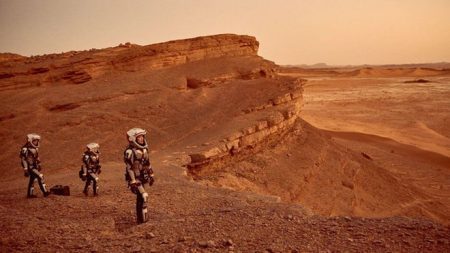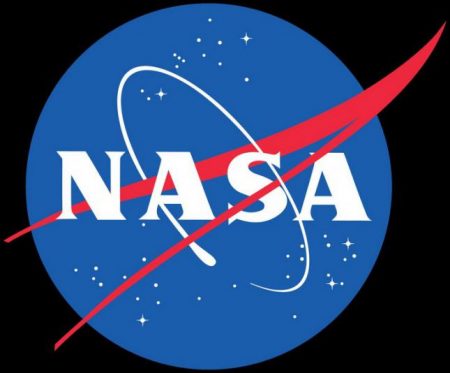June 4, 2017 – I know Donald Trump wants to send humans to the Moon and Mars while he is still President. He thinks it would be a really “cool” thing to happen while he is in office and has urged NASA to speed up their timetables. But Trump doesn’t know the half of what he is requesting. There is nothing cool about going to the Moon and Mars. It is more about sending people into a deep freeze even more perilous than Antarctica.
How do we think we can colonize the Moon or Mars when we cannot do this here on Earth in Antarctica. Today we have no permanent settlements there. So how do we think we can do this in two places even more inhospitable than the most southerly of Earth’s continents?

The Story of Our Human Presence in Antarctica
Humans first started visiting Antarctica in the late 18th century. Captain James Cook circumnavigated the continent in 1775. But it is not clear whether he ever sighted the mainland. More than likely remote islands of the Southern Ocean were mistaken for the continent. The first sightings of the Antarctic Peninsula came in 1820. The first landfall in 1821. What was the driving factor for 19th-century ships to visit the continent? Seals and whales.
For a time the search for the Magnetic South Pole motivated further exploration. In 1841 one expedition reached the Ross Ice Shelf but no landfall. After that whalers and sealers dominated human activity in proximity to the Antarctic continent. Then came exploration at the end of the 19th and beginning of the 20th century with the race to the South Pole. Some human explorers actually attempted to winter in Antarctica and found the continent a foreboding and unforgiving place. Many died. When Scott and Amundsen made their attempts to reach the pole, there was no thought of permanent settlement, just the planting of a flag to symbolize a human achievement.The conditions these explorers had to deal with included temperatures as low as -61 Celsius (-78 Fahrenheit).
The Antarctic expeditions were accompanied by provisions and animals, dog teams for Amundsen and ponies for Scott. They could hunt seal before heading into the interior using what they slaughtered for meat and blubber, the latter serving as fuel for fire and warmth. If desperate their animal companions could be sacrificed to keep them alive. Even so, Scott’s expedition did not survive the trek. Amundsen faired better.
Expeditions followed Amundsen’s success but none attempted to settle the southern continent. In the 1920s Richard Byrd flew over the South Pole in a series of expeditions. In 1934 he established a research station that could be continuously occupied. Antarctica even became a hotbed in the global struggle between the Western democracies and Germany’s Third Reich. The latter in 1938 laid claim to a piece of the continent. But no Nazis chose to stay.
Today, residency in Antarctica varies from lows of 1,100 in winter to highs of 4,400 in summer. Humans live and work in 37 Antarctic bases with the largest population residing at McMurdo Station, a mere 250. The humans in Antarctica are not there to settle a continent. No one is planting roots that will then grow into a much larger human presence. The environment is unsustainable without an enormous resupply effort.

The Story of a Future Human Presence on the Moon or Mars
Antarctica is here on Earth where no one has to bring air to breathe or water to drink. And yet we cannot conquer its environment and settle there.
So why do we think the Moon or Mars presents our species with a second Earth?
States Pascal Lee, of NASA’s Ames Research Center, “there is an escapism to wanting to go to Mars and start anew….The issue with that particular enticing concept is — to go to what? You would need an entire infrastructure set up in advance to support people there.”
Even Robert Zubrin, President of the Mars Society, and a strong advocate for going to Mars doesn’t see colonizing the Red Planet as a second Earth to ensure our species survival. Instead, he describes Mars as a springboard for scientific and engineering innovation. Zubrin states that Mars would turn us into a spacefaring species which means “we will gain greater control over our environment….essential to our long-term survival.” So Mars will make us better stewards of Earth.
But Stephen Hawking has a different opinion. Recently he announced that our species must find a new planet to inhabit or face our potential extinction. The deadline, 100 years. Feeding into this Mars or bust mindset is not something one normally associates with Professor Hawking.
But it certainly is Elon Musk‘s mantra. Musk sees humanity at risk if we remain bound to Earth. He founded SpaceX in 2002 to make us a multi-planetary species.
Antarctica, however, shows us that the Moon and Mars are no easy answer. Katharine Hayhoe, Director of the Climate Science Center, Texas Tech University, states, “Mars is not an escape hatch for planet Earth. If we do not take action to reduce and eventually eliminate our carbon emissions, they will overwhelm human civilization as we know it, long before Mars is ready to be colonized by large numbers of people.”
Building a colony on the Moon or Mars is a thousand times more difficult and a million times more expensive than anything undertaken to date in Antarctica. So unless there is a super compelling economic reason to inhabit those two off world locales permanently, Hayhoe and many others argue that fixing Earth should be our prime directive, leaving the Moon and Mars as places like Antarctica where we can explore and do science.
NASA’s Shopping List to Sustainability for Humans on the Moon and Mars
NASA is now considering a return to the Moon in the 2020s largely driven by the new Republican administration in Washington, DC. The agency previously set a 2033 target for a crewed mission to Mars with the goal to live on the Martian surface for a few months before returning home. To achieve Mars NASA has put together a “must have” shopping list to make it possible. Here are some of NASA’s requirements:
- Development of affordable launch systems capable of putting sufficient material into space to assemble what will be needed to get to Mars and back. The Space Launch System, prohibitively expensive, is not the best answer to this problem. SpaceX reusability applied to its heavy launch Falcon may prove to be a better choice.
- Development of autonomous technology that can work without human supervision in advance of human arrival at the planet to build and maintain life support and other infrastructure. This means further advances in robotics and artificial intelligence.
- Development of space waystations as fuel depots for refueling spacecraft in transit to and from Mars. Space refueling is being tested on the International Space Station.
- Development of non-chemical propulsion that is sufficiently powerful to speed up any spacecraft with humans on board to get them to Mars faster. Nuclear propulsion may provide a solution.
- Development of heavy payload delivery systems that can land on Mars. Curiosity, the size and weight of a small car, required a complex system for getting to the planet surface with the descent described by NASA staff as “7 minutes of terror.” What is needed is retrofire systems that can guide payloads to the ground in any Martian environmental conditions.
- Improvements to navigation software and technology so that when reaching Mars, human crews can land within walking distance of the infrastructure built by the autonomous systems that preceded their arrival. Crews should move into a working habitat that is adequately supplied to sustain them.
- Improvements to communication technology not only to link Mars to Earth, but also, to ensure missions of exploration are always connected to a Martian home base regardless of environmental conditions on the planet. This means further advances in optical Deep Space communications to support in flight and on surface interaction in a timely manner.
- Development of habitats that can stand up to Mars’ conditions. On Mars, ice and Martian regolith may prove to be the primary building materials. On the Moon, the lunar regolith is the most likely primary construction material.
- Development of net-zero water and waste recycling systems to ensure short to long-term sustainability for a human crew to survive on the planet.
- Development of resource technology to harvest water, oxygen, and fuel from the air, ground and subterranean locations on Mars.
- Development of a reliable power generation technology for Mars. Photovoltaic energy harvesting on Mars may be insufficient for a human settlement. With Mars getting only half the amount of light energy from the Sun that is available to Earth, NASA doesn’t see solar power as viable for Mars. Modular nuclear power technology may provide the solution. Today modular nuclear fission technology is still in its infancy. And fusion remains a decade away before it becomes commercially viable.
- If we want to explore Mars then we will need transportation systems that can move us efficiently and quickly while withstanding a punishing environment. We can learn some things from Opportunity and Curiosity, the two working rovers. Both have metal wheels that exhibit the scars and punctures from rolling on the planet’s surface. And both move very slowly. Humans will want to get around on Mars at a pace not too different from the way they drive here on Earth.
- And finally the development of cosmic and solar radiation protection for humans traveling beyond the relatively benign nature of Earth’s immediate space. Today humans don’t venture beyond low-Earth orbit. In the Apollo program of the 1960s and 70s, the five expeditions to the Moon exposed astronaut crews to deadly cosmic radiation. Those expeditions were short in duration. A prolonged stay on the Moon would be far more dangerous. And a trip to Mars would mean exposure to radiation that would undoubtedly shorten the lives and jeopardize the health of all of its human crew.
When President Trump announced that the United States was no longer to participate in the global cause of reducing greenhouse gas emissions, I’m wondering if he thought that there will always be Mars.
Well, there won’t. We are here for the duration. Earth will remain our primary home for the foreseeable future and learning collectively to live on it sustainably should be the goal of every one of us. For humanity, Mars and the Moon are and will remain interesting places to visit and explore, just like we do today in Antarctica.

















[…] current global problems. Even Earth’s currently ‘uninhabitable’ locations such as Antarctica are still much more habitable than Mars (or any other planet found to date), therefore, why should we invest in living on a comparably […]
We can figure out a way to settle any place as long as it can be made profitable. If gold were discovered in Antarctica we’d be impressed at how quickly it would be populated.